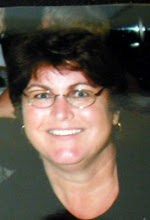 Las Vegas is the home of Atomic testing museum - right next to the Desert Research Institute. For the cost of admission, $12.00, we had several hours of blissful air conditioned comfort and access to a surprising number of exhibits. The Nevada Proving grounds was established in 1951 for the testing of atomic “devices” - its name later changed to Nevada Testing Grounds.
Las Vegas is the home of Atomic testing museum - right next to the Desert Research Institute. For the cost of admission, $12.00, we had several hours of blissful air conditioned comfort and access to a surprising number of exhibits. The Nevada Proving grounds was established in 1951 for the testing of atomic “devices” - its name later changed to Nevada Testing Grounds.In early atomic bomb testing, pilots flew through the radioactive mushroom clouds. Jeff said he wondered about the volunteers for those missions - it was probably whoever didn’t take t
 wo steps backwards.
wo steps backwards.One mistake was testing in clay soil. It resulted in plumes of radioactive dust sent 10,000 feet into the sky. They had to evacuate whole towns. Another time, they advised the 4,500 residents of St. George, Utah to stay inside when winds unexpectedly changed directions.
In the early days, the tourist industry was very concerned about testing so close to Las Vegas. The fear was it would keep gamblers away from the area. In fact, testing gave the industry a boost, when thousands of people came out to watch the atomic explosions. People booked rooms in upper floors of the casinos so they could watch the mushroom clouds from their windows.
Jim and Jeff were interested in reading about the engineering and the technical stuff - I preferred the interactive displays.
In one such exhibit cameras, used to record explosions, had extremely high shutter speeds. This was demonstrated by using a drop of milk to form mushroom patterns and ripple effects that could be isolated in each frame shot.
There was an interactive display where I passed a Geiger Counter over a number of items. It was surprising how much radiation was given off by a wind up clock with green luminous numbers. However, the largest radioactive numbers were registered when I passed the Geiger Counter over a red Fiesta ware plate. I learned that red color was made by adding uranium oxide to the glaze. During WWII, Fiesta red was discontinued when the US government confiscated the company’s stocks of uranium.

A display of a sparse family bomb shelter represented many such shelters installed in backyards during the 1950’s. The supplies that people were urged to stock were not that much different from emergency supplies everyone should have in case of a disaster - sealed water, medications, blankets, and food.
Some of the items in the display I would not have thought of – stacks of comic books, 45-semi automatic weapon, and a red round tin of “Commie mints.”
Upon leaving, there was the requisite donation box. We noticed a large number of currency from foreign countries. Jim dropped in 25,000 Vietnamese Dong (worth a little over a dollar) he had left from his bicycling trip in Vietnam.
Ah, the things I learn when traveling with my two analytical guys.




Museums are my favorite places to visit. I'm putting this one on my list.
ReplyDelete